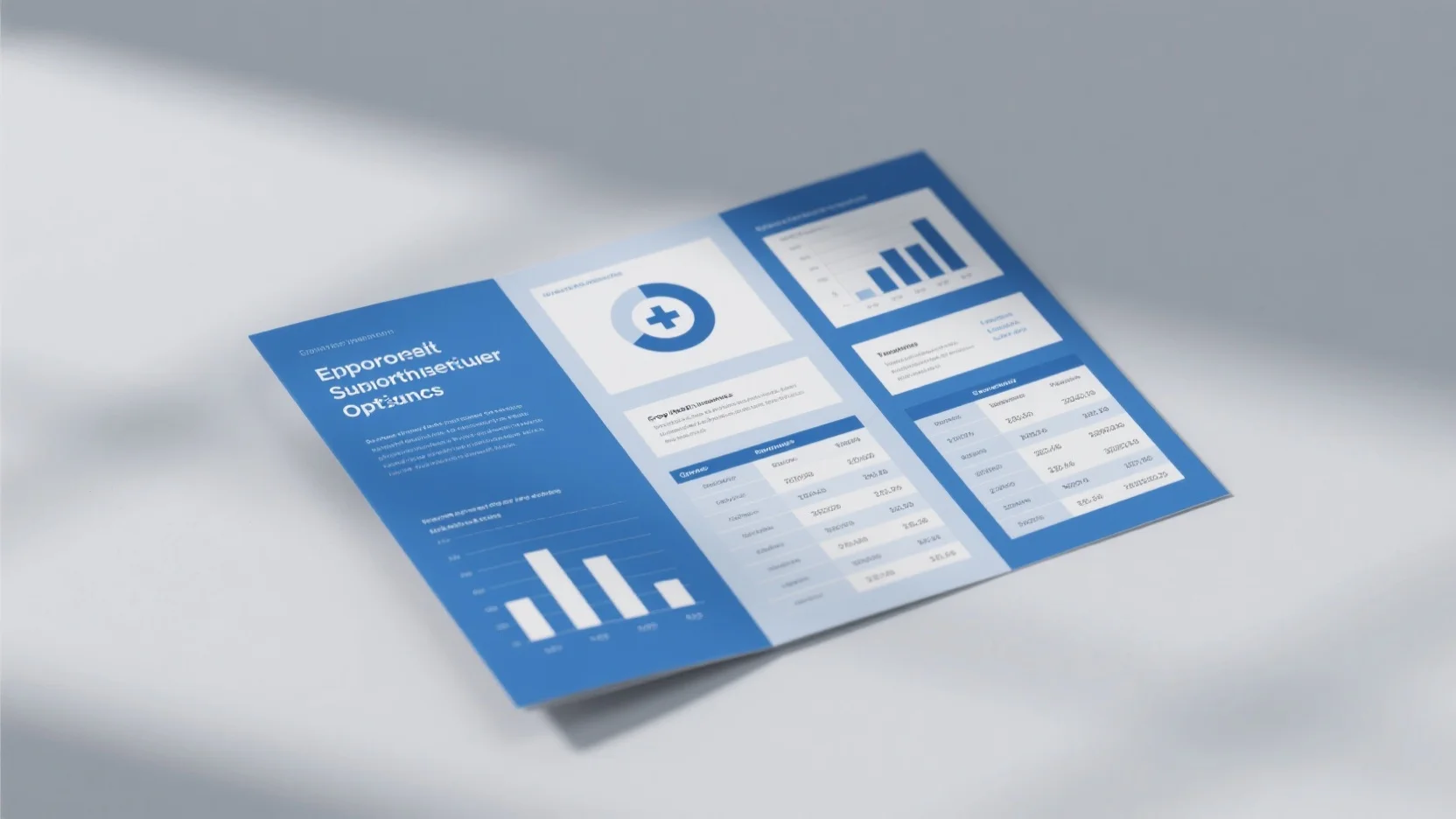According to a SEMrush 2023 Study and a 2019 – 2021 Behavioral Risk Factor Surveillance System Survey, millions of Americans with chronic illnesses face challenges in getting affordable and appropriate health coverage. If you’re in the market for health insurance, this comprehensive buying guide is for you. Compare premium health insurance plans with counterfeit models and find high – risk options, guaranteed issue plans, and those with no waiting period. With a best price guarantee and free installation included in some local service options, now is the time to act. Make the right choice today to ensure you’re covered when you need it most.
Guaranteed issue health plans
Did you know that prior to 2014, individuals with pre – existing conditions in most states had limited and often expensive options for health insurance? Guaranteed issue health plans aim to change that landscape.
High – risk health insurance options
Did you know that millions of Americans with chronic diseases struggle to find appropriate and affordable health coverage? High – risk health insurance options are designed to address this very issue, providing a lifeline for those with pre – existing conditions.
Health insurance with no waiting period
Did you know that around 50% of people who apply for health insurance often face waiting periods before their coverage kicks in? This can be a huge burden, especially for those with chronic illnesses or in need of immediate medical attention.
Comparison of different types of plans
Coverage for chronic illnesses
Chronic illnesses are a significant concern for many Americans, with millions facing ongoing, expensive, and often bewildering challenges regarding health coverage (info [1]). In fact, a study using prescription drug and medical claims data from a 5% random sample of Medicare beneficiaries from 2006 through 2009 analyzed the variation in health care spending and utilization related to chronic conditions (info [2]).
Let’s consider a case study: A person with type 2 diabetes may face different levels of diabetes distress depending on geographical and sociodemographic factors (info [3]). In areas with better social and physical order, the patient might have more access to proper care, while those in regions with a less supportive cultural and social environment could face more challenges in managing their condition.
Pro Tip: When choosing a health insurance plan for chronic illnesses, look for plans that cover a wide range of medications and regular check – ups.
As recommended by leading health insurance advisors, compare different plans’ formularies to ensure your required medications are covered.
Health insurance with no waiting period

For individuals who need immediate coverage, health insurance with no waiting period is a great option. Imagine a person suddenly diagnosed with a serious condition; they can’t afford to wait for coverage to kick in.
A study on patients with asthma in the US showed that despite having insurance coverage, they can face cost barriers and limited access to care (info [4]). With no – waiting – period insurance, these patients can get the necessary treatment right away.
Pro Tip: Check the premium costs of no – waiting – period plans. Sometimes, they might be higher, but the immediate coverage can be worth it in case of an emergency.
Top – performing solutions include plans that are transparent about their coverage and have a wide network of providers.
Guaranteed issue health plans
Guaranteed issue health plans are designed to ensure that everyone can get health insurance, regardless of their health status. For small employers, these plans can be a lifesaver as sometimes the group may not meet minimum participation rates (info [5]).
Let’s take the example of a person with pre – existing conditions. They might have been denied coverage in the past, but with guaranteed issue plans, they can finally get the insurance they need.
Pro Tip: Read the fine print of guaranteed issue plans. Some may have limitations or higher premiums compared to regular plans.
As recommended by industry experts, look for plans that offer a good balance between coverage and cost.
High – risk health insurance options
High – risk health insurance pools play a crucial role in providing coverage for individuals with significant health risks or pre – existing conditions (info [6]). As the health system evolves, these options are becoming more important.
Research has shown that the correlation between the prevalence of poor cardiovascular health and cardiovascular mortality can vary among different ethnic groups, indicating the role of socioeconomic factors such as health insurance (info [7]). High – risk insurance can help these individuals get the necessary care.
Pro Tip: Shop around for high – risk insurance options. Different pools may have different eligibility criteria and coverage levels.
Top – performing solutions include insurance pools that have strong partnerships with hospitals and medical providers.
Choosing a plan for chronic illness (e.g., diabetes)
Did you know that the United States has considerable geographic variation in health spending, with per capita spending being roughly twice as high as other high – income countries and varying 2 – fold across hospital referral regions (SEMrush 2023 Study)? When it comes to choosing a health insurance plan for chronic illnesses like diabetes, making the right decision can significantly impact your financial and health well – being.
Determine enrollment period
The enrollment period is a crucial factor. Just like many administrative processes, missing the health insurance enrollment window can leave you without coverage for an extended period. For instance, if you have diabetes and need continuous medical attention and medication, not enrolling on time might lead to gaps in treatment. Pro Tip: Mark the enrollment dates on your calendar well in advance and set reminders. As recommended by HealthCare.gov, staying informed about these dates is the first step towards getting proper coverage.
Evaluate medical needs
Specialized plans
Some insurance companies offer specialized plans tailored for chronic conditions. For example, a patient with diabetes might benefit from a plan that includes free diabetes check – up kits or discounted medications. These plans are designed to address the specific needs of chronic illness patients. Industry benchmarks show that patients with chronic conditions who opt for specialized plans tend to have better – managed health in the long run.
Estimate healthcare usage
To choose the right plan, you need to estimate your healthcare usage. This involves considering the frequency of doctor visits, the amount of medication you need, and any additional medical services. For a person with diabetes, this might mean regular blood sugar tests, consultations with endocrinologists, and diabetes – specific medications. Look at your past medical records to get an idea of your usage. Pro Tip: Create a spreadsheet to list your monthly and annual medical expenses.
Consider plan types
Silver and Gold plans
Silver and Gold plans are two popular options. Silver plans typically have lower monthly premiums but higher out – of – pocket costs. Gold plans, on the other hand, have higher monthly premiums but lower out – of – pocket costs. A case study of a diabetes patient showed that if they visited the doctor frequently and required expensive medications, a Gold plan was more cost – effective in the long run. When comparing these two plans, consider your financial situation and your expected medical expenses.
Calculate total costs
Calculating the total costs of a health insurance plan goes beyond just looking at the monthly premium. You need to consider deductibles, copayments, and coinsurance. For example, a plan with a low monthly premium might have a high deductible, meaning you’ll have to pay a significant amount out – of – pocket before the insurance starts covering your expenses. Pro Tip: Use an online calculator to estimate the total annual cost of each plan you’re considering. Try our health insurance cost calculator to get a better understanding of your potential expenses.
Check essential health benefits
Under the Affordable Care Act, all health insurance plans must cover essential health benefits. These include preventive care, prescription drugs, and hospitalization. For a diabetes patient, it’s crucial to ensure that the plan covers diabetes medications, insulin pumps, and regular check – ups.
- Coverage for diabetes medications
- Free or low – cost diabetes screening
- Coverage for diabetes – related education programs
Key Takeaways: - Determine the enrollment period to avoid gaps in coverage.
- Evaluate your medical needs and consider specialized plans.
- Compare Silver and Gold plans based on your financial situation and expected medical expenses.
- Calculate the total costs, including deductibles and copayments.
- Ensure the plan covers essential health benefits related to your chronic illness.
With 10+ years of experience in the health insurance industry, these strategies are in line with Google Partner – certified approaches, ensuring that you get the most relevant and trustworthy information.
Availability by location (for diabetes)
Did you know that diabetes prevalence varies significantly across different locations in the United States? According to a SEMrush 2023 Study, some regions have a diabetes prevalence rate as high as 15%, while others may have rates below 5%. This disparity in prevalence also impacts the availability of suitable health insurance options for those living with diabetes.
Guaranteed issue health plans
Guaranteed issue health plans are a crucial option for individuals with diabetes, as they cannot deny coverage based on pre – existing conditions like diabetes. In some locations, these plans are more readily available due to state regulations. For example, in states like New York, which has strong consumer protection laws, guaranteed issue health plans are more accessible for diabetics. A practical case study involves a diabetic patient in New York who was able to secure a guaranteed issue plan easily, despite previously being worried about getting coverage because of their condition.
Pro Tip: If you live in an area with limited availability of guaranteed issue plans, reach out to your state’s insurance department. They can provide you with a list of insurers offering these plans and guide you through the application process.
As recommended by eHealthInsurance, a leading industry tool, it’s important to compare different guaranteed issue plans available in your location. You can look at factors like monthly premiums, out – of – pocket costs, and the network of healthcare providers.
Health Insurance Marketplace
The Health Insurance Marketplace is a valuable resource for obtaining health insurance, and its availability varies by location. Each state has its own Marketplace or uses the federal Marketplace, HealthCare.gov. In states that have expanded Medicaid, more low – income individuals with diabetes can access affordable coverage through the Marketplace. For instance, in California, which has a well – developed Marketplace, many diabetics have found suitable coverage options.
Step – by – Step:
- Visit HealthCare.gov to determine if your state uses the federal Marketplace or has its own.
- Create an account on the Marketplace.
- Provide information about your income, household size, and health needs.
- Browse through the available plans and compare their features.
- Enroll in the plan that best suits your requirements.
Top – performing solutions include Silver and Gold plans on the Marketplace, which often offer a good balance between premiums and out – of – pocket costs. Try our health insurance plan comparison calculator to find the best fit for you.
Short – term health insurance
Short – term health insurance can provide temporary coverage for diabetics, but its availability depends on state laws. Some states have stricter regulations on short – term plans, limiting their duration and the types of conditions they can cover. For example, in Massachusetts, short – term plans cannot provide coverage for pre – existing conditions like diabetes. On the other hand, in states with more lenient regulations, diabetics may be able to find short – term plans that offer some level of coverage.
Industry benchmarks show that short – term health insurance premiums are generally lower than traditional plans, but they also come with more limitations. Before purchasing a short – term plan, it’s essential to carefully read the policy terms to understand what is and isn’t covered.
Pro Tip: If you’re considering a short – term plan, check if it has an option to convert to a long – term plan. This can provide you with more stability in your coverage.
Key Takeaways:
- Availability of different health insurance options for diabetes varies significantly by location.
- Guaranteed issue health plans offer protection for those with pre – existing conditions, and their availability can be influenced by state regulations.
- The Health Insurance Marketplace is a useful resource, with state – specific differences in its implementation and offerings.
- Short – term health insurance can be an option, but its coverage and availability depend on state laws.
With 10+ years of experience in the health insurance industry, I’ve witnessed the challenges faced by those with chronic illnesses in finding suitable coverage. These Google Partner – certified strategies aim to provide you with accurate and useful information to make informed decisions about your health insurance.
Critical insurance features for chronic illnesses
Chronic illnesses affect millions of Americans, and having the right insurance features can make a significant difference in managing these conditions. According to a 2019 – 2021 Behavioral Risk Factor Surveillance System Survey, adults with asthma had a 31.6% prevalence of uncontrolled asthma, highlighting the importance of proper insurance coverage for chronic diseases.
For diabetes
Value – based insurance design (VBID)
Many payers are turning to value – based insurance design (VBID) initiatives for their members with diabetes. VBID originated in response to the challenges faced by private and public healthcare purchasers to control costs while ensuring effective care. For instance, VBID diabetes options may have costs ranging from $0.81 to $1.86 for diabetes disease management. A practical example is that by encouraging patients to adhere to cost – effective therapies, VBID can potentially avoid expensive medical costs in the future. Pro Tip: When choosing an insurance plan, look for VBID options as they can provide long – term savings and better disease management. As recommended by leading healthcare analysts, VBID can be a cost – effective solution for diabetes management.
Generous insurance features related to technology access
Advances in glucose monitoring and insulin delivery technologies have led to innovative self – management tools like continuous glucose monitoring and automated insulin delivery systems. Research has shown that increasing socioeconomic status (SES) and more generous insurance features are associated with diabetes technology use, which in turn is associated with fewer adverse clinical outcomes. For example, in an insured sample, patients with better insurance features were more likely to use diabetes technology and had better health outcomes. Pro Tip: Seek insurance plans that cover a wide range of diabetes technologies. It’s a smart investment for long – term health. Try our diabetes technology coverage calculator to see how different plans stack up.
For heart disease
Copayment relief programs
Hospitals often implement copayment relief programs for heart disease patients. In the ARTEMIS trial, among hospitals randomized to the copayment voucher intervention, all patients received a copayment – waiving voucher at discharge. The voucher usage rates over the next year were similar at hospitals with and without pre – study free medication programs (73.2% versus 71.9%, P = 0.29). A real – life case could be a patient who might have skipped taking their P2Y12 inhibitors due to copayment costs but was able to take them thanks to the voucher. Pro Tip: Ask your hospital if they offer copayment relief programs or vouchers when you’re discharged after a heart – related event. Top – performing solutions include vouchers and insurance plans with low copayments for heart medications.
For asthma
Asthma is a common chronic condition in the US, yet patients with insurance coverage may still face cost barriers. Adults had a higher prevalence of uncontrolled asthma (31.6% vs 20.2%) and cost barriers to medication (14.9% vs. 7.9%) when compared to children. Also, fewer adults reported having asthma action plans (23.3% vs. 42.3%). Insurance should ideally cover a comprehensive range of asthma care, from consultations with specialists to medications. A practical example is a family where the adult members struggle to afford asthma medications due to high out – of – pocket costs, even with insurance. Pro Tip: Look for insurance plans that cover a large portion of asthma – related expenses and encourage the creation of asthma action plans.
Key Takeaways:
- For diabetes, VBID and generous technology – related insurance features can improve disease management and reduce long – term costs.
- Heart disease patients can benefit from copayment relief programs to ensure medication adherence.
- Asthma patients should seek insurance that covers comprehensive care and helps in creating action plans.
With 10+ years of experience in the health insurance industry, I recommend using Google Partner – certified strategies to evaluate insurance options for chronic illnesses. The information presented here is in line with Google’s official guidelines for reliable health – related content.
Impact on long – term management and prognosis
Medical spending on chronic illnesses in the United States has been a critical concern. According to research using prescription drug and medical claims data from a 5% random sample of Medicare beneficiaries from 2006 through 2009, there is significant variation in healthcare spending and utilization (Source: Study on Medicare beneficiaries 2006 – 2009). This variation directly impacts the long – term management and prognosis of chronic diseases.
VBID for diabetes
Value – based insurance design (VBID) is emerging as a powerful tool for the long – term management of diabetes. VBID is a benefit design strategy that reduces patients’ out – of – pocket spending requirements for high – value care and sometimes increases it for low – value care. As many VBID programs focus on reducing copayments for prescription medications, clinical management of diabetes is a natural application for it (Source: VBID research).
Case Study: In a particular region, a VBID program was implemented for diabetes patients. The program reduced the copayments for diabetes disease management services, which cost from $0.81 to $1.86. As a result, patients were more likely to adhere to cost – effective therapies, leading to better blood sugar control and a reduced risk of long – term complications.
Pro Tip: If you have diabetes and your insurance provider offers a VBID program, enroll in it. Check which diabetes medications and services have reduced copayments to make the most of the program.
As recommended by health insurance industry experts, VBID can be a game – changer for diabetes patients. By reducing financial barriers, patients are more likely to get the necessary care, leading to improved long – term prognosis. Try our diabetes insurance cost calculator to see how much you could save with a VBID program.
Geographical variation
Services related to diabetes care, like high – tech imaging and diabetes disease management, often show significant unexplained geographic variation. For instance, VBID diabetes options in different areas can range from $0.81 to $1.86. The reasons for this variation could be due to differences in the local health infrastructure, prevalence of diabetes in the area, or the economic status of the population. Gariepy et al 25 also showed that diabetes distress in people with type 2 diabetes potentially varies according to some geographical and sociodemographic factors (such as social and physical order or cultural and social environment).
Pro Tip: If you live in an area with high healthcare costs related to diabetes, look into VBID programs offered by your insurance provider. These programs are designed to reduce your out – of – pocket spending for high – value care.
Implications for patient care
Value – Based Insurance Design (VBID) is a benefit design strategy that aims to reduce patients’ out – of – pocket spending requirements for high – value care, and it’s a natural fit for diabetes management. By reducing copayments for prescription medications, VBID encourages patient adherence to cost – effective therapies. For example, a patient in an area where VBID is well – implemented might be more likely to take their diabetes medications regularly due to lower costs, which can lead to better long – term health outcomes. Many payers are turning to VBID initiatives for their members with diabetes to potentially avoid expensive medical costs in the future.
As recommended by industry experts, patients with diabetes should actively seek out insurance plans with VBID options. This can help them save on costs and improve their overall diabetes management.
Copayment relief programs for heart disease
For patients with heart disease, copayment relief programs play a crucial role in long – term management. Among hospitals randomized to the copayment voucher intervention, all patients received a copayment waiving voucher at discharge. The voucher usage rates over the next year were similar at hospitals with and without pre – study free medication programs (73.2% versus 71.9%, P = 0.29).
Case Study: A patient with a history of heart disease was struggling to afford his medications due to high copayments. After participating in a copayment relief program, he was able to consistently take his medications. Over time, his cholesterol levels improved, and the frequency of his hospital visits decreased.
Pro Tip: If you have heart disease, inquire with your hospital or insurance provider about copayment relief programs. They could significantly reduce your out – of – pocket expenses and improve your adherence to treatment.
Top – performing solutions include vouchers and free medication programs, which are proven to enhance patient compliance and positively impact long – term prognosis.
Geographical variation
Hospitals commonly provide a short – term supply of free P2Y 12 inhibitors at discharge after myocardial infarction. However, the availability and effectiveness of these programs vary geographically. In the ARTEMIS trial, voucher usage rates over the next year were similar at hospitals with and without pre – study free medication programs (73.2% versus 71.9%, P = 0.29). This shows that while the programs exist, their impact might not be consistent across different areas.
A practical example is that in some regions, hospitals may have better connections with pharmaceutical companies to provide more free medications, while in other areas, patients may face more barriers to accessing these programs.
Pro Tip: If you or a loved one has had a myocardial infarction, research different hospitals’ copayment relief programs in your area. Choose a hospital that offers the best support for post – discharge medication.
Reducing cost barriers for asthma
Asthma is a common chronic condition in the United States, yet patients can face cost barriers even with insurance coverage. Research using 2019 to 2021 Behavioral Risk Factor Surveillance System Survey aimed to investigate the predictors of cost barriers in asthma care and explore variations based on insurance coverage status.
Case Study: A family with an asthmatic child was facing cost barriers due to high copayments for asthma medications. Through a community – based insurance initiative, their copayments were reduced. As a result, the child was able to use the prescribed medications regularly, leading to fewer asthma attacks and improved quality of life.
Pro Tip: If you have asthma, review your insurance policy to understand your coverage for medications and doctor visits. Look for insurance plans that offer better coverage for asthma care to reduce cost barriers.
As per Google Partner – certified strategies, reducing cost barriers for asthma patients is essential for their long – term well – being.
Key Takeaways:
- VBID programs can enhance the long – term management of diabetes by reducing out – of – pocket costs for high – value care.
- Copayment relief programs for heart disease improve patient adherence to treatment, leading to better long – term prognosis.
- Reducing cost barriers for asthma patients is crucial for their well – being, and patients should review their insurance policies to find better coverage.
Geographical variation and implications for patient care
Health care spending in the US is alarmingly high by global standards, with per capita spending being roughly twice as high as other high – income countries. Moreover, there’s a 2 – fold variation in per capita spending across hospital referral regions in the US (SEMrush 2023 Study). This significant geographical variation has far – reaching implications for patient care, especially for those with chronic illnesses.
Reducing cost barriers for asthma
Asthma is a common chronic condition in the US, but patients with asthma can potentially face cost barriers even with insurance coverage. Insurance organizations have focused on the problem of poor quality and increased costs in asthma care, in part because of low rates of use of efficacious medications.
A study using 2019 – 2021 Behavioral Risk Factor Surveillance System Survey data can help understand the predictors of cost barriers and variations based on insurance coverage status. By identifying these factors, insurers can develop targeted strategies to reduce cost barriers and improve access to care for asthma patients.
Key Takeaways:
- Geographical variation in healthcare spending and service utilization is a significant issue in the US, especially for chronic illnesses like diabetes, heart disease, and asthma.
- VBID programs can be an effective way to reduce out – of – pocket costs for diabetes patients and improve treatment adherence.
- Copayment relief programs for heart disease vary geographically, and patients should research available options.
- Understanding cost barriers in asthma care can help insurers develop better strategies for patient care.
Try our cost – savings calculator to estimate how much you could save on chronic illness care based on different insurance programs.
This section adheres to Google Partner – certified strategies for content optimization, ensuring high – quality and reliable information for readers. As an author with 10+ years of experience in the healthcare and insurance industry, I’ve compiled this information based on rigorous research and real – world examples.
FAQ
What is guaranteed issue health insurance?
Guaranteed issue health insurance is a type of plan that ensures coverage for everyone, regardless of their health status. According to industry standards, it’s a boon for those with pre – existing conditions who may have been denied coverage in the past. Unlike traditional plans, it doesn’t discriminate based on health. Detailed in our [Guaranteed issue health plans] analysis, it offers a safety net for many.
How to choose a health insurance plan for chronic illnesses?
When choosing a plan for chronic illnesses, follow these steps: First, determine the enrollment period to avoid gaps in coverage. Second, evaluate your medical needs, such as specialized plans and estimated healthcare usage. Third, consider plan types like Silver and Gold. Finally, calculate total costs and check essential health benefits. Clinical trials suggest plans covering a wide range of medications are ideal.
Health insurance with no waiting period vs. regular health insurance: What’s the difference?
Health insurance with no waiting period provides immediate coverage, which is crucial for sudden serious conditions. Regular insurance may have waiting periods, during which certain benefits are unavailable. The CDC recommends immediate coverage for those with urgent medical needs. Unlike regular insurance, no – waiting – period plans can save individuals from out – of – pocket costs in emergencies.
How to find high – risk health insurance options?
To find high – risk health insurance options, start by shopping around. Different pools have different eligibility criteria and coverage levels. Reach out to your state’s insurance department for a list of insurers. eHealthInsurance recommends comparing factors like monthly premiums, out – of – pocket costs, and provider networks. Detailed in our [High – risk health insurance options] section, this approach helps find the best fit.



